Physical Address
304 North Cardinal St.
Dorchester Center, MA 02124
The use of injectable soft tissue fillers in the chin and jawline is becoming increasingly popular.
A deep knowledge of the underlying anatomy and anatomic changes that occur with age is essential to improve outcomes and minimize risk when treating the lower face.
Hyaluronic acid-, calcium hydroxyapatite-, and poly- l -lactic acid-based injectables can all be considered for chin and jawline augmentation.
Adjuvant therapy with neuromodulators, energy-based devices, and in some cases, surgical modalities, can help optimize aesthetic results.
Lower face augmentation is increasing in popularity as evidenced by the American Society for Aesthetic Plastic Surgery data showing a 20% increase in mentoplasties between 2017 and 2018, with this procedure being most common in the 18- to 34-year-old age category. Historically, augmentation of the lower face was frequently addressed surgically, whereas a skilled injector can now achieve similar aesthetic results with soft tissue fillers. Despite the benefits of soft tissue filler injections, practitioners not uncommonly fail to address the lower face, possibly because of the advanced techniques required and challenging nature of treating this area. Assessment of the lower face is an important consideration in the facial aesthetics for both men and women as appropriate treatment of the chin and jawline can lead to significant improvement in global facial aesthetics.
Facial aging occurs as a result of many factors including bone and fat remodeling and resorption, attenuation of facial septa, and loss of elastic tissue ( Fig. 24.1 ). When combined with gravity, these changes result in soft tissue descent. A 2010 computed tomography (CT) scan study found many similarities between male and female skeletal changes over time, including decreased mandibular ramus height, body height, and body length and increased mandibular angle ( Fig. 24.2 ). As a result, the mandible undergoes an anterior and inferior pattern of resorption. The chin also undergoes changes, becoming more anterior and shorter with age.
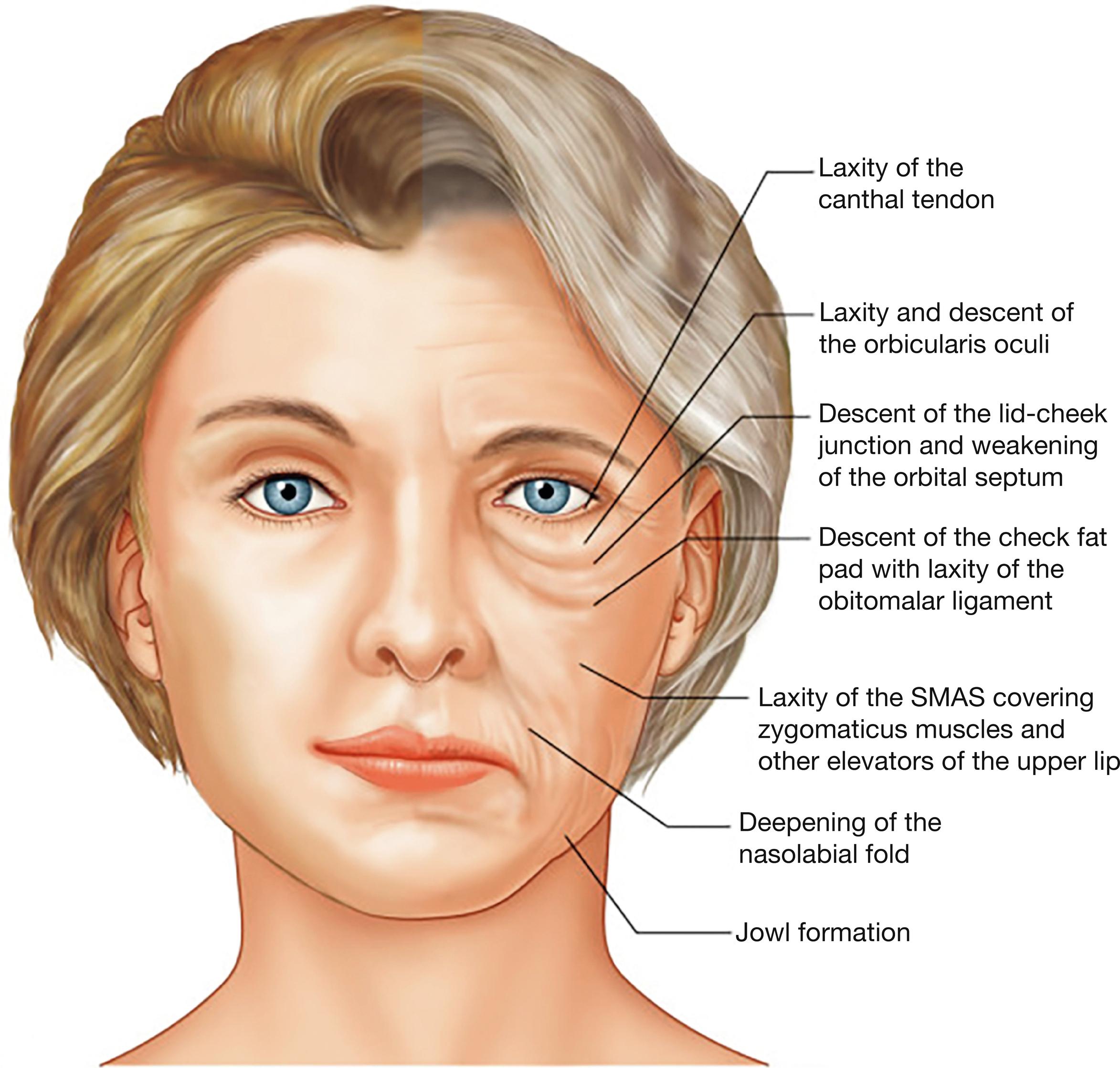
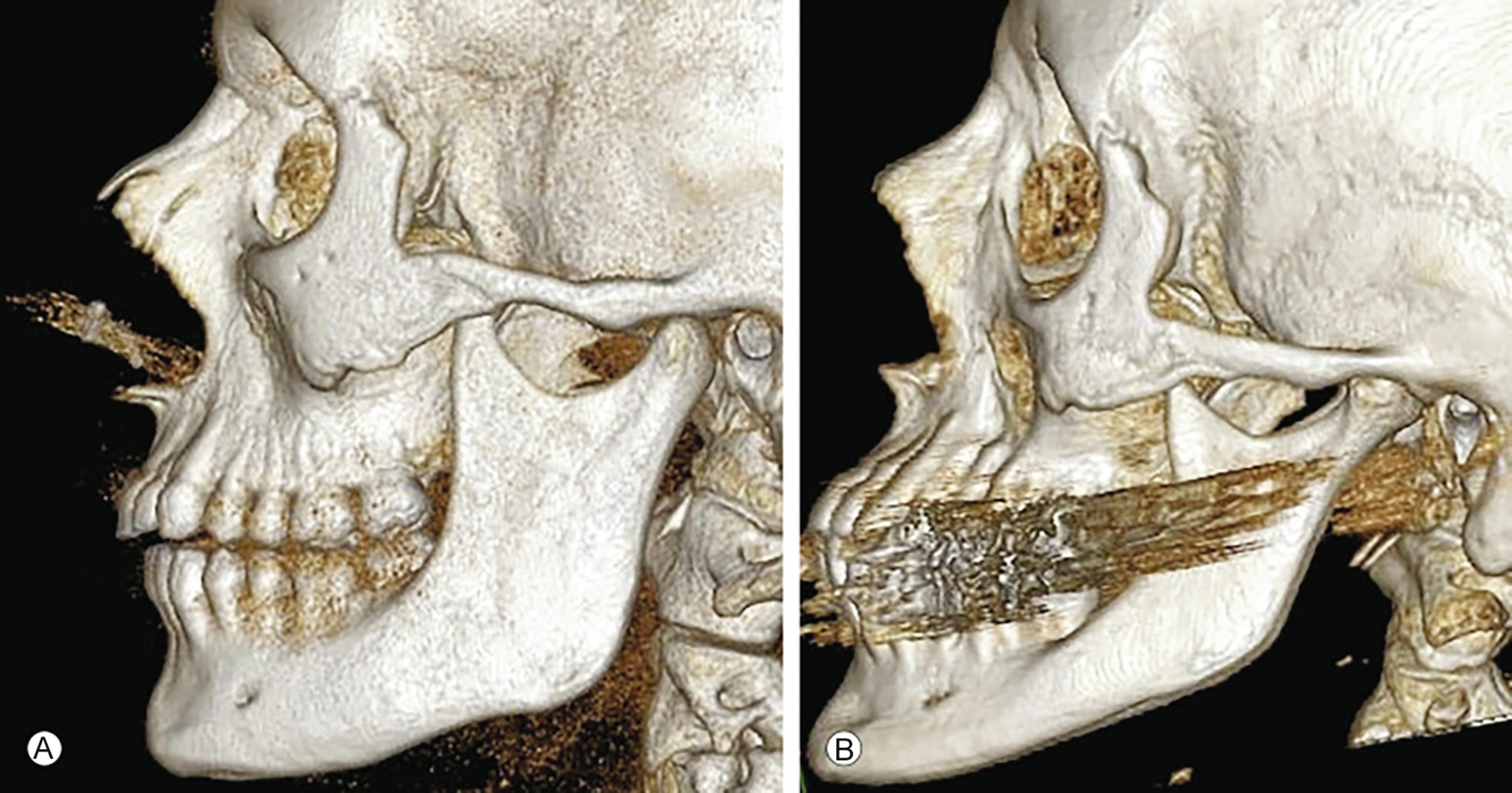
Fat pad resorption and weakening of facial ligaments and septa contribute to changes seen in the lower face. Some authors believe that the ligaments retain their strength yet the unsupported tissue between the ligaments shifts inferiorly due to gravity. In contrast, it is thought that a weakening of the mandibular septum causes the superior and inferior jowl fat pads to shift inferiorly, contributing to the appearance of jowls. No significant anterior fat pad shift occurs due to what is thought to be the retained strength of the mandibular ligament, which appears as a groove in the skin anterior to the jowl. The weak adherence of the platysma to the mandible posterior to this ligament has also been shown to contribute to jowl formation. Furthermore, Suwanchinda and colleagues demonstrated in cadaver dissections that the arrangement of subcutaneous fibroconnective tissue leads to the formation of the mental crease.
Females tend to have more rapid soft tissue atrophy in the perimenopausal period, whereas males show a more linear decline over time. Combined with skin atrophy, these changes result in an overall loss of chin and jawline definition, leading to an aged appearance of the lower face.
Although concepts of facial beauty and ideals have evolved somewhat over time and vary between ethnic groups, understanding global facial proportions and symmetry are still critical to achieving optimal outcomes. Furthermore, many ideals of facial beauty are shared across cultures and over time it is through an understanding of these ideals that one can understand facial beauty.
A foundational concept in achieving optimal results is that of 360 degree facial assessment. This seemingly simple concept is often overlooked by patients and injectors alike. Failure to assess the profile view carries with it the real risk of creating unnatural proportions. Similarly, it is important to assess the face both at rest and in animation.
The frontal view permits assessment of the vertical thirds and horizontal fifths of the face, which should respectively be roughly equal. Understanding these and the importance of facial proportions in general may lead the injector to plan, for example, to elongate the chin or widen the jawline to help balance facial proportions.
As seen in Fig. 24.3 , a masculine facial shape is often compared to a square, where the bizygomatic to bigonial width ratio is close to 1:1. Men often have wider chins that are roughly the width of the mouth and have more well-developed lateral chin tubercles. In contrast, females often desire a more rounded and narrowed chin. The ideal overall facial shape for females can vary from patient to patient, including oval, heart, round, and angular, to name a few. It is important to note that in females, a bizygomatic-to-bigonial ratio of greater than 1:1 is desired such that the midface is wider and the lower face is narrower. However, injectors must keep in mind that the zygoma and mandible, and their ideal ratios, do not exist independently from the remainder of the midface and upper face. For example, in a patient with temporal volume loss, widening the bizygomatic width to achieve facial harmony with the bigonial width may inadvertently accentuate the skeletonized appearance of the upper face.
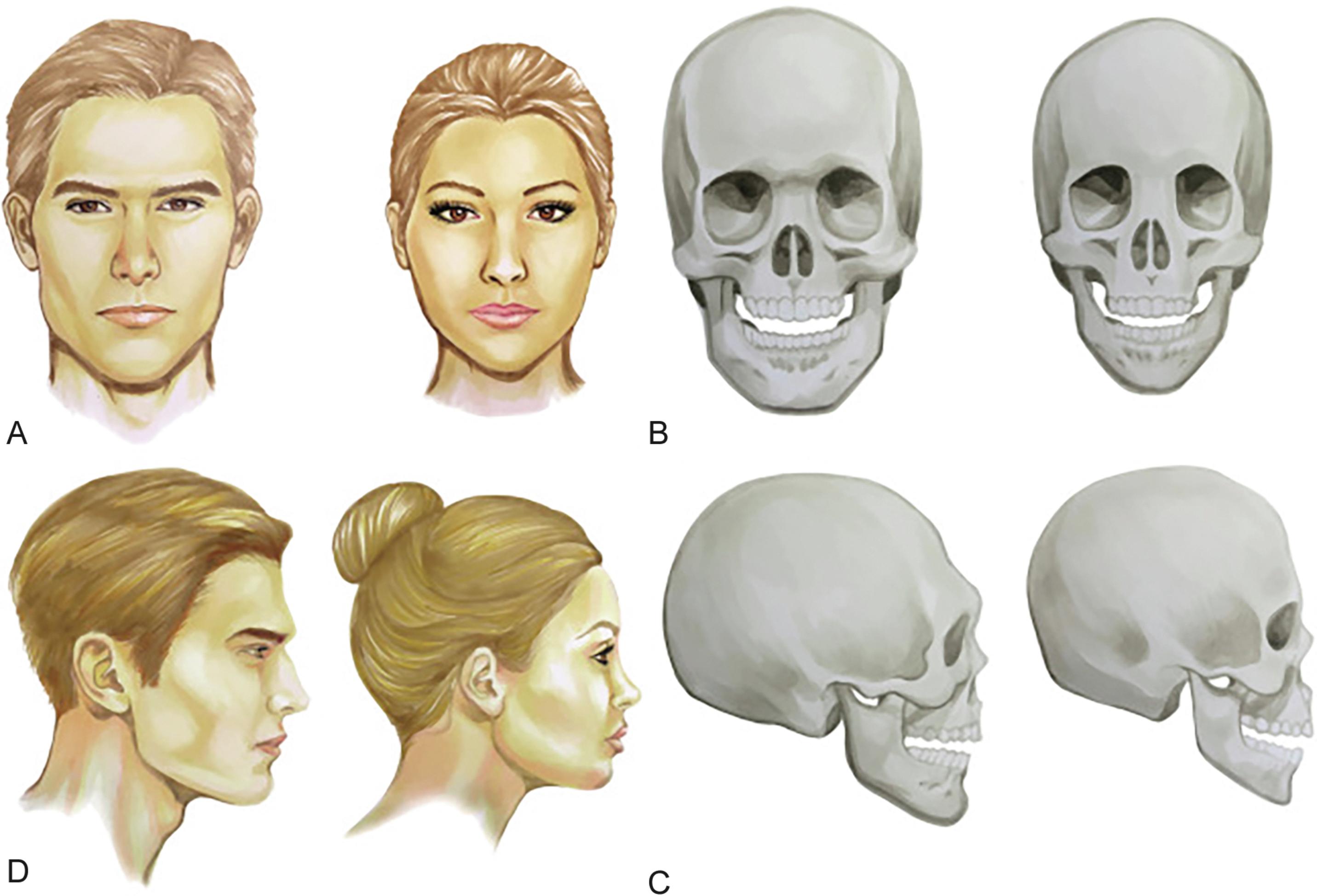
On the profile view, males have a more protuberant chin, whereas a feminine chin sits just posterior to the vermillion of the lower lip. Upper lip, nose, and chin projections are closely related and must be considered together in treatment planning. A number of methods for assessing soft tissue balance of the lips, nose and chin have been developed, including Ricketts E line and Steiner S line ( Fig. 24.4 ), the latter being widely used in orthodontics. When the aforementioned structures are balanced, the lips should touch the Steiner S line, which is a line extending from the soft tissue pogonion to the middle of an S-shaped curve between the nasal tip and subnasale. Jacobson’s soft tissue analysis is another useful cephalometric landmark to be aware of when assessing facial profiles ( Fig. 24.5 ). This analysis classifies facial profiles into straight, convex, or concave categories based on the angle formed at the intersection of lines drawn from the glabella to subnasale, and subnasale to soft tissue pogonion. An angle of convexity of 8 to 16 degrees indicates a straight profile, while an increased or decreased angle represents a convex or concave profile, respectively.
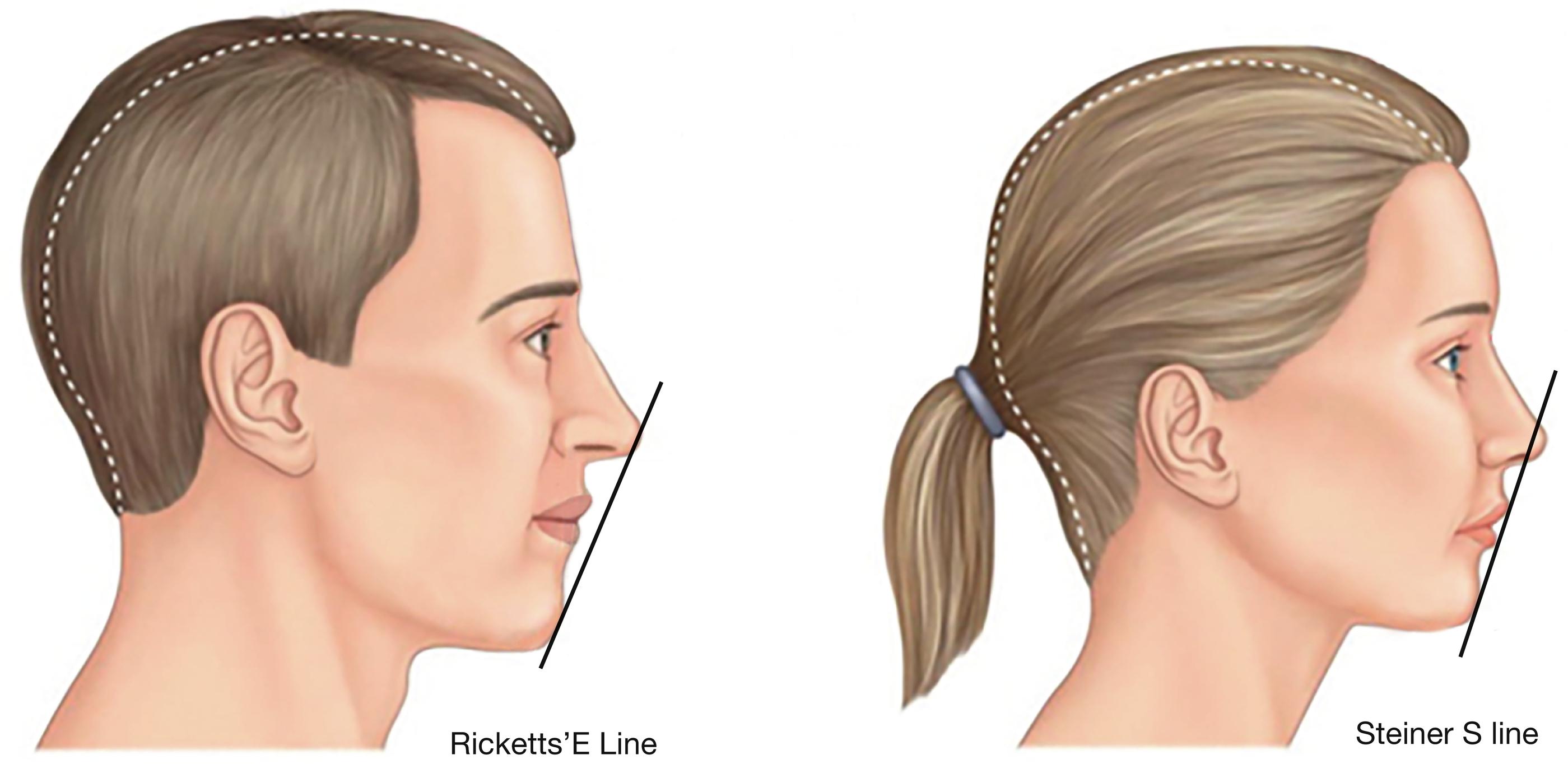
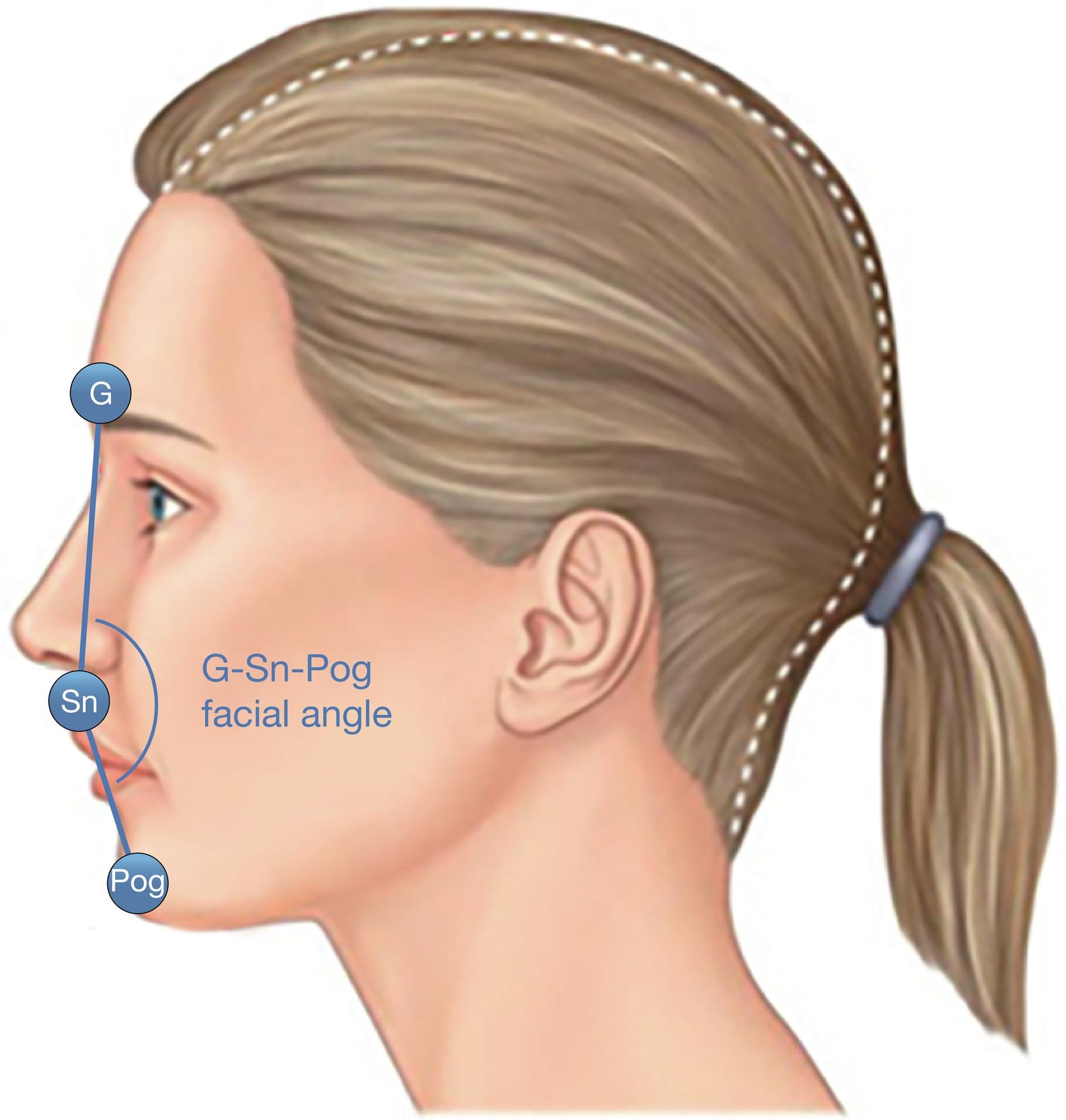
Where the most inferior portion of the mandibular ramus and the most lateral portion of the mandibular body meet is termed the “mandibular angle.” A 2016 internet survey on male jaw shape revealed that desirable features include a 130-degree mandibular angle and that the transition to the vertical portion of the jawline should be no lower than the lower lip and ideally in line with the oral commissure. A reduction in the mandibular angle, resulting in a smoother vertical to horizontal transition, is thought to create a more feminine jawline compared to the prominent flexure of the male jaw.
The mandible is the primary bony structure of the lower face consisting of a horseshoe-like inferior body and two perpendicular mandibular rami. The mandibular bodies join at the midline mentonian symphysis. Falling near the midpupillary vertical line, the mental foramen is found between the lower and upper mandibular borders. A vertical line drawn through the second inferior premolar is another landmark used to locate the mental foramen. Both the mental nerve and artery exit from this foramen.
As with other areas of the face, the lower face has superficial and deep fat compartments ( Fig. 24.6 ). The mandibular region consists of four deep fat compartments: the superior and inferior mandibular fat compartments, submandibular fat compartment, and a fat compartment covering the parotid-masseteric fascia. The superficial fat pads relevant to the soft tissue augmentation of the lower fat are the lateral-temporal cheek compartment located in the preauricular area, the midcheek fat compartment, and the superior and inferior jowl fat compartments. The chin has its own superficial and deep fat pads as well that can be addressed with filler.
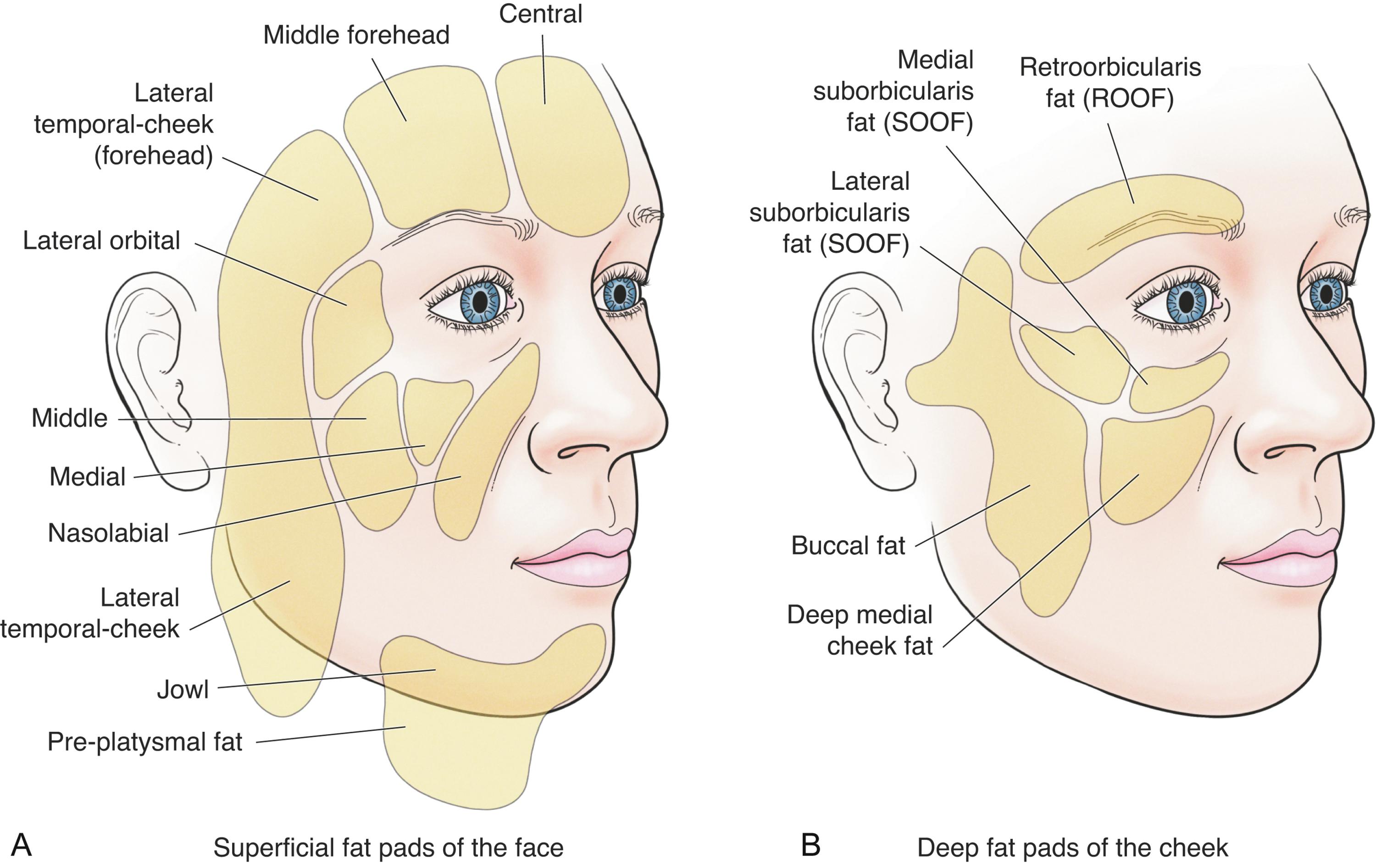
The facial septums and ligaments most relevant to soft tissue augmentation of the lower face are the mandibular septum, mandibular ligament, and masseteric cutaneous ligament ( Fig. 24.7 ). Their possible relevance to the aging process has been discussed earlier. The mandibular septum originates approximately 1 cm superior to the mandibular border and separates the mandibular edge from the submandibular fat compartment. Some authors believe that it is an extension of the mandibular ligament. The mandibular ligament is found at the inferior border of the labiomandibular sulcus, anterior to the jowls, and traverses behind the depressor anguli oris (DAO) muscle, inserting into the dermis. The mandibular ligament reflects the most inferior portion of the facial line of ligaments. This line of ligaments is important for injectors to be aware of as placement of product lateral and medial to the line has a lifting and volumizing effect, respectively. Lastly, the masseteric cutaneous ligament is considered a vertical separation of the lateral cheek and premasseteric space. Its exact placement over the masseter appears to vary from the anterior-border to the midline of the masseter muscle itself.
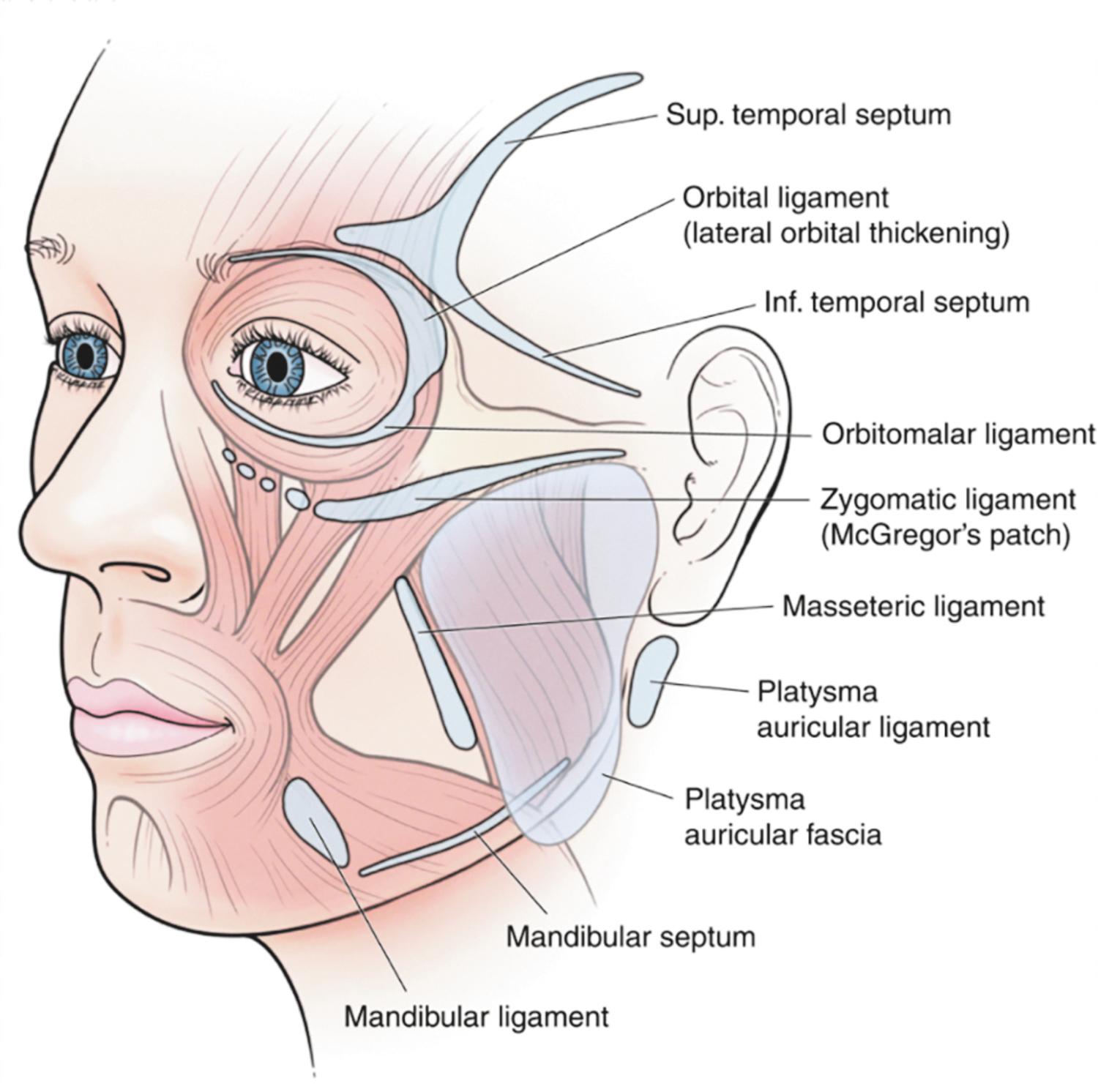
Become a Clinical Tree membership for Full access and enjoy Unlimited articles
If you are a member. Log in here